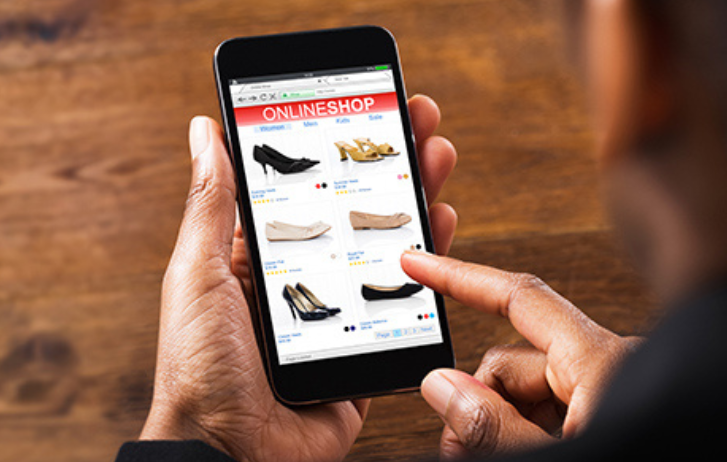
Why SMEs Are Tapping Social Commerce In Asia
By Dennis Velasco | First published: August 13, 2021 Updated: August 17, 2022
E-commerce has provided many SMEs with opportunities to expand or recover during the pandemic. Here’s why upgrading your digital marketing strategy can help your business thrive and survive.
It’s no secret that the COVID-19 pandemic has accelerated digital adoption by SMEs, particularly in the retail space. Social commerce has also emerged as a popular shopping experience that’s both fun and convenient. The customers’ journey is put front and center. With social commerce, consumers can shop directly within a social media platform.
In Asia Pacific, where internet access and smartphone penetration continue to grow, social media users report that they use social platforms not only to stay connected with family and friends, but also to shop, submit reviews, and browse for new products. Coupled with the pandemic spurring on the acceleration of social commerce, more and more consumers are being driven to shop online regularly.



The Asia Pacific social commerce market is projected to reach US$24,29,266.2 million by 2028, with China, India, Singapore and Indonesia leading the pack.
Looking to take advantage of the opportunities social commerce can provide your small business? The rise of social commerce is directly linked to customer experience. SMEs need to ask themselves: “How can we give our customers the best possible online shopping experience?”
Three things make or break the customer experience:
1. Seamless online purchasing journey
SMEs are now able to map out their customer’s purchasing journey, which means they have the power to make it better. Common hindrances include delayed shipping, missed deliveries, long wait times, additional shipping costs, limited options, and lack of proactive communication. Aside from these, SMEs also need to look into setting up their shipment process.
Selling within social commerce does not always come with the pre-integrated shipping options that online marketplaces provide. While WeChat is able to offer a seamless messaging and an online shopping platform, other social commerce platforms -- such as Facebook, the most-used platform in APAC -- rely on third-party solutions.
TikTok, Instagram and a new wave of platforms across Asia – such as Meesho in India – all have a different user experience. New apps and social commerce start-ups are also entering the market, from re-selling platforms to those focused on groceries or bulk-buying. With so many differences between platforms, it’s important to understand the customer and purchase journey on each – and which one is right for you.
2. Personalized buyer options
A more personalized shopping experience can contribute to an increase in customer spending, especially when social commerce is so popular for sectors such as fashion retail and cosmetics. And for social commerce, users often expect a more casual approach. SMEs can actively send:
- Direct messages to chat about products and offer advice
- Personalized thank-you notes included in the packing slip
- Tailored recommendations for other products based on purchase
- Discounts for friends and referral offers
With the rise of social commerce, “unboxing” has now become an opportunity to provide a unique experience worth sharing on social media.
Some businesses are also offering consumers their choice of:
- Shipping and delivery provider
- Same-day, two-day, or choose-your-day shipping
- Self-service option to change, update, or modify booking
3. Responsive customer service
Consumers expect brands to be “always-on”. Messaging with businesses directly on social media offers an opportunity to redefine customer service through quicker response times, personalized touch, and the convenience to connect with customers on a platform they’re already on. When it comes to shipping, top-notch customer service doesn’t stop with providing real-time information on product availability and delivery time.
Customers want faster delivery. Asia Pacific is reported to be the second in leading shares for same day delivery, next to North America, due to the demand of the market as e-commerce continues to rise. However, responsive customer service isn’t only important for orders that are ready to ship.
Recent global supply chain problems mean that a big part of customer service these days is communicating when a product will be back in stock or advising on longer-than-usual shipping times.
That means it’s important for SMEs to partner with established logistics providers that have the ability to:
- Offer different freight services depending on business needs
- Handle large shipping volumes on a day-to-day basis
- Provide cross-border international services
- Be responsive and flexible to market demands, doing things quickly while saving on costs
A final tip: choose the right partners
In the world of e-commerce, you’ll need to create an ecosystem around your business. Collaborating with suppliers, distributors, and solutions providers helps SMEs to manage demand and deliver a great experience. When it comes to choosing the right partner for your shipping needs, look for:
Integrated Services
SMEs benefit from a shipping partner that offers an integrated shipping system that connects and consolidates orders from all your social commerce, marketplace, and online store platforms. Imagine the time and money you could save by automating this process.
Trusted and Reliable
The steep rise of online shopping and great demand for faster delivery times are pushing businesses to choose their shipping providers with great care. Partnering with a trusted and reliable shipping provider gives customers added confidence in your ability to fulfill their orders.
Safe and Convenient
Order fulfillment is all about making sure that orders arrive safely and in good condition. And having a mobile solution for shipping, tracking, and scheduling helps to meet that need and provides visibility.
Fast and Easy Delivery
A growing number of shoppers fail to return for another purchase if the delivery doesn’t arrive on time. Partnering with a shipping provider that has a large international network and agile logistics system increases the guarantee of a fast and easy last-mile delivery.
Timely and Cost Effective
Shipping providers who are able to handle large volumes of shipments, as well as different freight services to meet different shipping needs, could help offset the cost for SMEs.
The bottom line? Social commerce is accelerating fast. The time is now for businesses to sharpen their digital tools and confidently lean on the right logistics providers to see forward momentum. Need some guidance? Check out how FedEx can help enable your e-commerce business with flexibility, convenience, and smooth processes here.
SHARE THIS STORY
- Generative AI: A New Frontier
- How To Ship A Giant Panda
- How To Make Freight Shipments Work For Your Small Business
- The Rise Of Intra-Asia Trade: Opportunities In The China-Southeast Asia Corridor
- Where Do Old Planes Go When They Retire?
- What’s So Dangerous About Coconuts? Your Guide To Dangerous Goods Logistics
Sign up now and save on your shipping rates!
Sign up now and earn discounts by shipping instantly with FedEx Ship ManagerTM at fedex.com.
Recommended For You

Live Commerce Is Now One Of Korea’s Biggest E-Commerce Trends
The pandemic has changed online retail habits, with many Asian shoppers buying in real-time on their mobile phones via a live commerce platform.
Read More
Introducing The Latest Megatrends In E-Commerce
Digital megatrends are transforming logistics. We look ahead to map how these shifts in online and consumer behavior can benefit SMEs.
Read More
The 5 Proven E-Commerce Features Your Online Store Needs
As consumer behavior shifts and online shopping becomes the norm, SMEs need to build a smart, intuitive online store that converts again and again.
Read More

